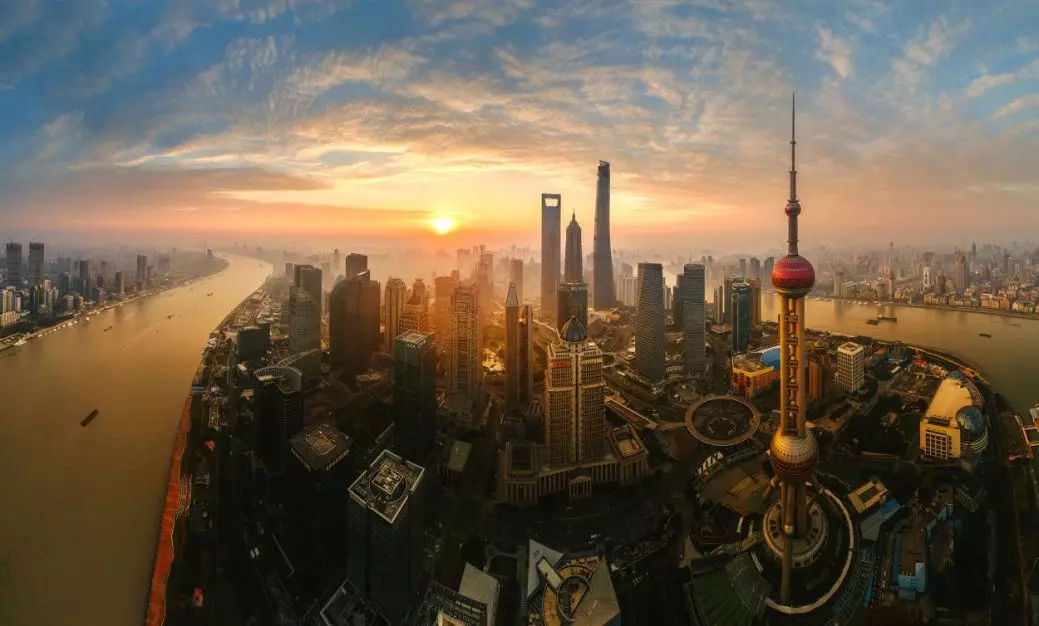

China’s actual use of foreign capital continues to grow amid the COVID-19 epidemic and increasingly complex and challenging conditions both at home and abroad, and the country remains a top choice for foreign investors.

Pudong, Shanghai (Photo/Pudong Times)
In the first 10 months of the year,the actual use of foreign investment in China grew by 6.4 percent year-on-year to 800.7 billion yuan, or 3.9 percent to $115.1 billion in dollar terms, the Ministry of Commerce (MOFCOM) said on Nov. 16.
The actual use of foreign investment in China expanded 18.3 percent year on year to 81.9 billion yuan in October. This marked the seventh consecutive month that the country has seen positive growth in FDI.
Such achievements are attributed to China’s determination and actions taken to further open up, and to the fact that China has taken the lead in effectively controlling the epidemic and ensuring enterprises can operate normally, said economist Song Qinghui.
Song noted that the vast Chinese market’s ability to offer more cooperation and development opportunities to international partners is another reason behind the country’s growth of foreign capital inflows.
On the same day, the construction of the Starbucks China Coffee Innovation Park officially began in the Kunshan Economic and Technological Development Zone in Kunshan city, east China’s Jiangsu province.
The global coffee chain announced the project, its largest manufacturing investment outside the U.S., in March this year, and committed $156 million to it at the groundbreaking ceremony.
According to the latest Global Investment Trends Monitor published by the United Nations Conference on Trade and Development, global FDI flows in the first half of 2020 plunged, with the biggest declines in Europe and the U.S., warning of a highly uncertain outlook.
However, FDI in China remained more resilient and stable, the report said. In the first half, flows to China reached $76 billion, a lower-than-expected decline of 4 percent.
The country’s recent recovery growth of FDI inflows can be attributed to an 84 percent rise in the value of M&A transactions, mostly in information services and e-commerce industries, and to government investment facilitation measures.
“Compared to other economies, China has taken the lead in epidemic control, work and production resumption, and economic recovery. The World Economic Outlook of the International Monetary Fund also predicted that China would be the only economy in the world to show positive growth in this year,” said Jiang Han, a senior fellow at the Pangoal Institution, a Beijing-based think tank.
Against this background, it’s normal for China to witness growth in FDI, Jiang noted, adding that investing in China is a better choice for foreign firms.
Zong Changqing, director-general of MOFCOM’s department of foreign investment administration, said it proves that the attractiveness of China’s massive market to foreign investment has not changed, its comprehensive competitive advantages in industrial facilities, human resources, and infrastructure have not changed, and foreign investors’ long-term investment and business expectations and confidence in China have not changed.
The current stable and positive trend is expected to continue in the fourth quarter, and the goal of stabilizing foreign investment for the whole year will be achieved, Zong added.
 Fire brigade in Shanghai holds group wedding
Fire brigade in Shanghai holds group wedding Tourists enjoy ice sculptures in Datan Town, north China
Tourists enjoy ice sculptures in Datan Town, north China Sunset scenery of Dayan Pagoda in Xi'an
Sunset scenery of Dayan Pagoda in Xi'an Tourists have fun at scenic spot in Nanlong Town, NW China
Tourists have fun at scenic spot in Nanlong Town, NW China Harbin attracts tourists by making best use of ice in winter
Harbin attracts tourists by making best use of ice in winter In pics: FIS Alpine Ski Women's World Cup Slalom
In pics: FIS Alpine Ski Women's World Cup Slalom Black-necked cranes rest at reservoir in Lhunzhub County, Lhasa
Black-necked cranes rest at reservoir in Lhunzhub County, Lhasa China's FAST telescope will be available to foreign scientists in April
China's FAST telescope will be available to foreign scientists in April "She power" plays indispensable role in poverty alleviation
"She power" plays indispensable role in poverty alleviation Top 10 world news events of People's Daily in 2020
Top 10 world news events of People's Daily in 2020 Top 10 China news events of People's Daily in 2020
Top 10 China news events of People's Daily in 2020 Top 10 media buzzwords of 2020
Top 10 media buzzwords of 2020 Year-ender:10 major tourism stories of 2020
Year-ender:10 major tourism stories of 2020 No interference in Venezuelan issues
No interference in Venezuelan issues
 Biz prepares for trade spat
Biz prepares for trade spat
 Broadcasting Continent
Broadcasting Continent Australia wins Chinese CEOs as US loses
Australia wins Chinese CEOs as US loses